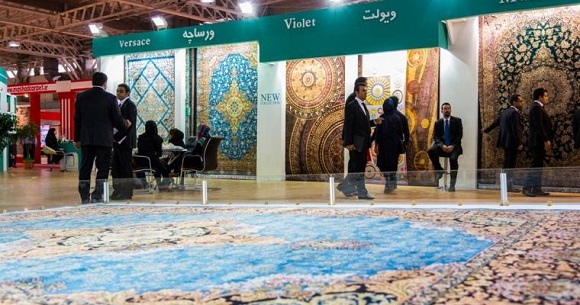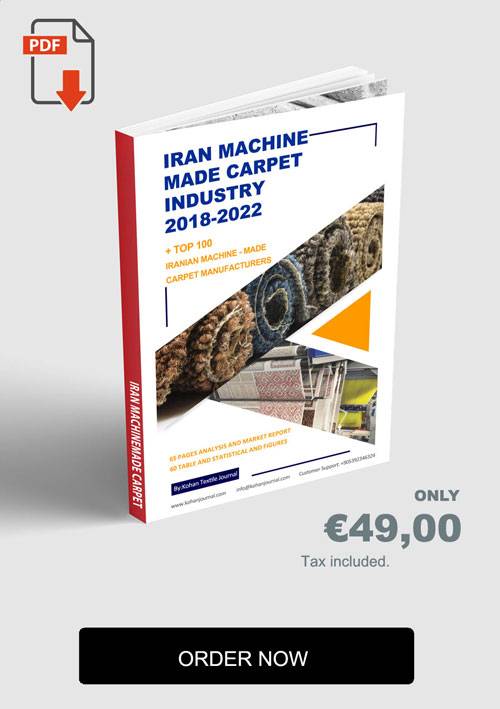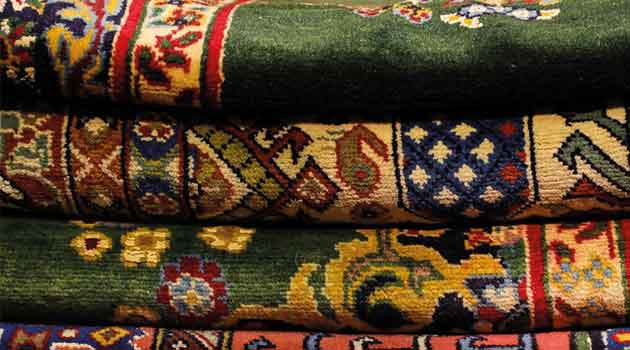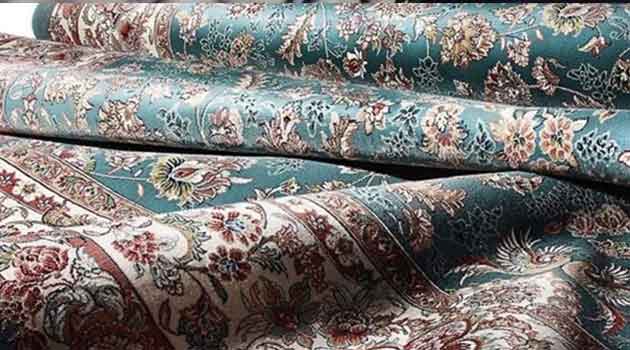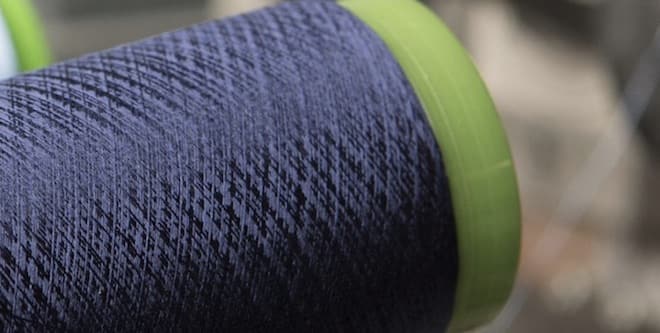Farrahi Carpet, now known internationally with its commercial and selling brand, “Mr. Carpet”, which has stores in many Iranian cities, is one of the oldest carpet producing companies.
Ahmad Farhi is the director of the collection, who, of course, believe that he is the sole producer of the collection with him, and the rest is left to his sons Ali and Hussein Farhi.
Established in the 1970s, Sepehr Kashan is one of the first carpet manufacturing companies in the country and today has several types of invention and invention in the field of carpet production.
Ahmad Farhi, one of the leaders in the textile and carpet industry in the country, has worked for many years in textile factories in various positions, and in part of this interview, he described his experiences in these years for the Kohan textile journal.
He has also been a member of the Kashan Chamber of Commerce for many years and is considered to be one of the most experienced in the industry. We had a detailed discussion with Agha Farhi about different areas of machine rugs, production and economy of the country due to their personal experiences and educational backgrounds which you can read below.
– It’s true that your company is recognized not only in the whole country but internationally. But since the interview is due to be published in the old issue of The Kohan textile Journal (especially the Domotex Hanover Exhibition), I need detailed explanations of Farhang Carpet Company’s history, type of machinery used, year of establishment, and technology used by the audience for the kohan textile Journal.
In summary, I have been working as a quality control manager for a newly built and developing Ravand plant since 2007. There were two very good features: one on education and the other on quality control. As a result of these two issues, the high quality of the manufactured products of the Ravand factory enabled us to find the first name in Iran and the Middle East.
Until 1988, I was involved in managing the warehouses of the factory in Ravand. In year 4, I came out and set up a carpet weaving unit. In fact, the second carpet weaving machine made in Iran happened by our company.
After that, we built several carpet production units, one of which was Sepehr Carpet Kashan, which fortunately won the title of the first national carpet unit, and after that, with the help of the kids, we built this Sepehr Carpet Textile Unit and worked on it.
What was important was that we tried to produce new products that were first introduced into the Iranian market. And we did about 4 patent cases and for the first time we used polyester filament rate for machine rugs (weaving and knitting yarn).
Fortunately, it was successful and we exported very well because this product is not yarn or lint and does not cause allergies, has a very long life and durability and most of the outside are looking for products and flooring that do not lint.
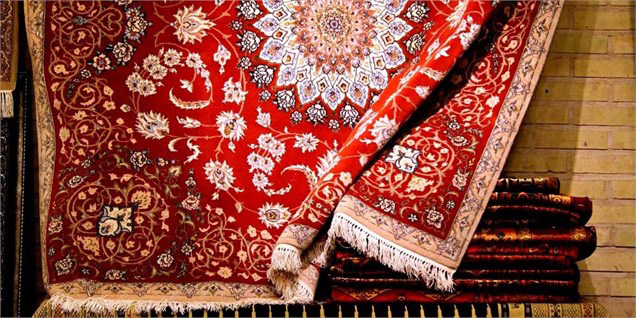
We have made a lot of investments and expenses in this area. Fortunately, we got a good result. We have a relatively complete set of production lines. And that’s one of the features of our collection. The second is that we have no dependence on raw materials abroad.
All of our materials are manufactured in Iran (from Tanggoo Petrochemicals) processed here and used for carpets. The third feature of our collection is Export Talk, which is exported better than Acrylic and other carpets. Our next feature is our unique collection system.
We already had two stores, which of course have now been downgraded to about 3, and we have established a hybrid series called Mr Carpet. Two more are in the running. One will be established in Mashhad and the other in Isfahan next month. All of our products are supplied by our own units and have no problem fueling.
– How do you see the country today as a producer?
Fortunately, today the government has realized to some extent that the issue of production and export is the only way to save the state and the country.
And the government seems to implicitly look at production. Exports are a matter of government and we have no choice but to improve our relations with other countries in the world in order to succeed in exporting.
But in the light of the current situation, one cannot be too optimistic about the future, and it is certain that one must proceed very cautiously, arithmetically, and with books. For example, today, because of the Internet outage, we cannot clear our goods and have to pay for them, while our factory workers are also unemployed. These are the unpredictable issues that are bending the economy and manufacturing.

For example, the government’s new biennial funding sources are largely tax-exempt because of the boycott of oil sales. Other sources include subsidies and the sale of government property. That doesn’t include too many properties.
The government seems to focus on the tax issue. And this tax comes at a time when we are in a deep recession and inflation. We have a term in the economy called the Dutch disease, which is coincident with the recession.
Like a person with both hypertension and weakness. If the drug is used to treat weakness, the blood pressure rises and strokes. Now, if he takes medication to regulate his blood pressure, he will faint and go into a coma.
This is the problem we have in our country today. Unfortunately, the government has been reluctant to implement this new tax system. Today’s government is in a state of disrepair, and unfortunately, many of its decisions have not been taken into account, and the challenge for the government’s industrial and economic sector is to have a more coordinated approach to organizations and chambers of commerce and trade unions. To act.
I believe that if we interact with the world in terms of exports, we can have billions of dollars in export revenue, which is currently estimated at around $ 2 to $ 5 million, with money and swap problems and a lot of issues. It is in the dark, but if the government can solve the problems out there a good future awaits us, and we hope it does.
ـ Given that you are also present in the Chamber of Commerce and have a close relationship with government officials. What elements are needed to increase exports and boost production and the economy within the producing country?
First, the infrastructure for everything needs to be provided. There are three economic perspectives in our country today. An ideological view that economists disregard. A view of the state economy and some through it have brought some benefits to the economy. The third view is either the free economy or the private sector.
For example, our automotive industry is government-owned and does not have good quality for sale in export markets. If we were to sell our car around the world, maybe they wouldn’t buy it for a third of its domestic price because it was not of a good quality.
Here, the government faces a world of problems if it decides to outsource the private sector. It may be necessary to transfer a number of state-owned factories to the private sector, such as the Hepco Arak plant.
But unfortunately, it is too late to do so. The government must first stop rent-seeking and create conditions where there is no discrimination. For example, if a factory is to be sold, the conditions of purchase are the same for everyone.
Deliver government factories to people who have a strong track record in industry and manufacturing. A striking example is what happened after World War II in East Germany. At that time, the government decided to give state-owned factories to highly qualified, ideologically-minded people at a very cheap price and only set a precondition for buyers.
The buyer can manage the collection in such a way that there is no lobby or party use. If we are to move in this direction, we must equalize the situation for all members of society and do not have to think, respect and think about people’s economic power and only look at the individuals’ work records and leave the wheel of production behind. .
If the government wants to give this industry to the private sector, it must first provide the necessary infrastructure. One of the areas where companies must undergo radical changes before they can be outsourced is our laws. Most of our laws are annoying rather than helpful. We have to make the rules clear, not make the law.
We need to reinforce the spirit of convergence in our society and know that this is our country and put aside a number of issues and look at things from a national perspective. Give the producer a price. Another issue is to invite foreign investors while maintaining their financial and financial security for their presence and investment in Iran.
-Iranian products are now slowly finding their place in the foreign market. Why does the foreign buyer like the Iranian carpet more than the modern carpet we are manufacturing with us?
This is related to our handmade carpet history. Many countries in the world recognize Iran with handmade carpets. In the pre-revolution era, our highest export figure after oil was handmade carpets. Unfortunately, after the revolution, it suffered a series of problems.
The carpet weaving is completely inspired by the design and color and role of the handmade carpet and with its high shoulder height and density it tries to get closer to the handmade carpet. It was this issue that made us still have the first word in design and color in the world.
In terms of technology used in the field of carpet we are by the way very up-to-date and precisely the opposite of some other domestic industries. The carpet industry is undoubtedly the highest in Iran.
Even we are much more advanced in the field of comb and high density than Turkey and other carpet producing countries. But Turkey has been more successful than us in fantasy designs and so-called cheap carpets, but it also has some government support. In Turkey, export bonuses are given to producers before they leave the country, but in Iran this is not the case.
Unfortunately, in our country, despite low energy costs and labor wages, we have poor productivity.
-What is the solution for the Chamber of Commerce and the private sector in this case?
The solution is for the government to accept the private sector first, to accept their words and recommendations and to value what we are saying. We have attended many meetings with no output.
Well, in response to why this is the case, we need to look at the flaws of the nation’s administrative systems, the rents, the misuse and the interests of the many at stake.
– During a period in Kashan and throughout the country, loans were allocated for setting up production units. What were the effects of these loans?
These loans were under Mr. Ahmadinejad’s time to allocate these loans to the manufacturing sector, which in many cases went wrong. For example, people used to borrow rent, but spent it elsewhere, which increased the price of land or cars, or increased liquidity and inflation. That is to say, the money that was supposed to go into the production sector of the country and instead of producing wealth increased inflation and recession.
Or, for example, Mr. Rouhani’s government tried to keep the exchange rate constant. As a result, our imports increased and exports declined, which meant that we helped the importer import even tombstones and shovels.
As a result, the industry was marginalized. And suddenly the dollar exploded. The story that emerged showed that some of our government officials either lack the authority to make decisions or are illiterate. We did the exact opposite of China. China did not make any effort to maintain its value in order to boost its exports.
I speak very clearly because I love my country and I am very sad about the situation. We could have made a lot more progress in society. Our young and educated force is nowhere in the world. The highest capital in any country is manpower.
What is our manpower? Many of them have either become addicted, either gone abroad or drowned and lost on the way out to sea. The government should be able to make a definitive decision and look at things from a national perspective.
ـ How long can people work in the industry who do not have enough experience and knowledge and only get government money?
ـ Many have gone bankrupt. For example, they cannot pay for insurance, labor, or electricity, which are held regularly by banking and government officials. All of them are now in a state of disarray. However, its effects appear.
See, one of the features of the innovation industry is reform. If it is not in the innovation industry, it is doomed to fail. That is, if the carpet industry did not grow and we could not have new technology or designs, it would be doomed to fail. Industry cannot remain stagnant. The world is evolving and we cannot sit in one corner and think like we did fifty years ago.
We have mismanaged the economy. The economy is not made by prayer, not by cannon and tanks. Economics is created by science. By lending to non-specialists, they disrupted economics. In the meantime, some made money. The government also compensated for the deficit. Nowhere in the world are these wrong tactics.
The only healer of our economy is the private economy, not the state economy. They must create equal opportunities for all in the community and one who has the capacity to work.
\One of the disadvantages today is that the government is taxing a large unit rather than collecting revenue based on income from the manufacturer. In fact, one of the obstacles to growth in production is this view.
That is to say, if your workshop is bigger then you have to pay more taxes. In fact, in most cases, the steps the government takes are wrong. If we want our society to be saved, we must eliminate discrimination. Provide the necessary infrastructure to stop the rent. Make the situation equal for everyone and do not leave the manufacturer’s wheelchair.
It is interesting to know that in Japan, with a population of 4 million, the number of government staff is about 5,000. But in our country, with a population of about 2 million, we have about 5 million people. One reason for inflation is the high number of government workers. When we use 2 people out of 5.
This slows down the process. In advanced countries, it takes up to two hours for a license and a construction permit, while in Iran it takes about a year or six months. These are structural issues and have opened up to many things whenever the government can overcome its obstacles. If the economy is correct, the culture will also be corrected. We cannot say anything in the world until we have the power in the economic sphere.
We need to boost the economy, improve people’s lives, and not starve in the country. People can think better and live better and ultimately work better. I won’t do a good job until I’m hungry. A worker who is hungry today and does not have enough income cannot perform well. Write this really. The wages a worker receives doesn’t even cover fifty percent of his life. That’s why worker productivity is low.
These problems exist in our society, and will continue to exist until we solve them from a structural point of view. And the only way is to pay attention to the private sector. We hope this is done as soon as possible and I, as an Iranian, said this with compassion and we are fortunate to have been and will not be and will be and will not be. Our line is the production line.




